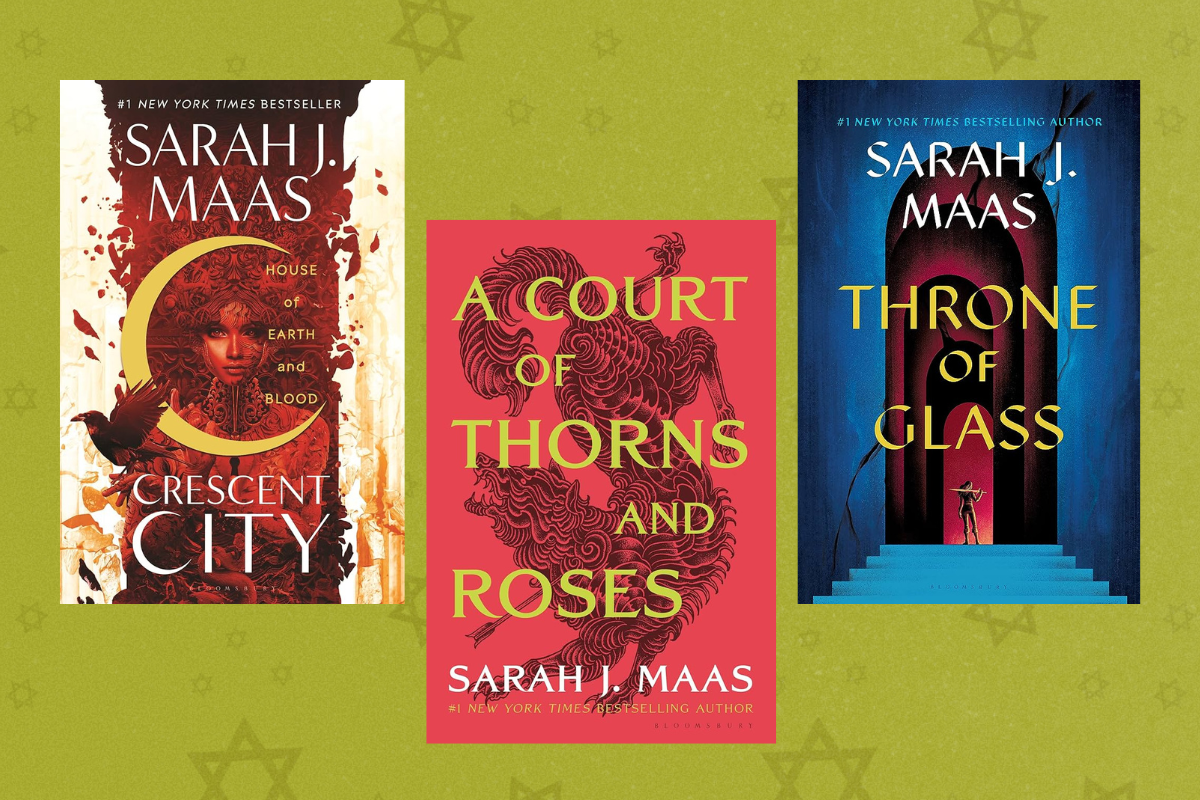This article contains major spoilers about multiple books by Sarah J. Maas.
Whether you’ve been thinking about starting to read “A Court of Thorns and Roses,” or you’re a long-time fan of “Throne of Glass,” it’s likely that you’ve heard of Sarah J. Maas. The author is making headlines the world over thanks to her fantasy series. Whether you’re invested in them for the well-written smut or the beautiful way she weaves her stories, fans can’t put down her novels. But what some readers might not know about the rather private author is that she was raised by a Catholic mother and a Jewish father and attended Hebrew school in her youth. She went on to attend Hamilton College for religious studies and met her future husband at her college’s Hillel, where he served as president. Her connection to her Jewish faith isn’t just apparent when looking at her personal history, though. It just takes a keen eye and a flip through any of her series’ to recognize that she has woven her culture through every story.
All throughout her books, beginning with her “Throne of Glass” series, carrying through “A Court of Thorns and Roses” and in her most recently published series “Crescent City,” Maas has sprinkled in her Jewish culture more and more liberally, using it as a beautiful foundation for the lore of the world she’s creating.
While it may seem that references to Judaism in the “Throne of Glass” series are sparse — the Hebrew-based name Abraxos, the Hebrew word for market, shouk — there is actually a central character who, upon close reading, bears striking resemblance to a figure from the Torah. Nehemia Ytger, the Princess of Ellywe, shares quite a few attributes with the Biblical Nehemiah. Nehemiah fought to restore Jerusalem and the Hebrew people to a point of peace and safety, and the Nehemia of Maas’ “Throne of Glass” series does much the same, sparking a revolution that leads masses out of enslavement. While the parallels stretch a little thin in places, it feels clear where Maas’ inspiration came from.
“A Court of Thorns and Roses” is where Maas begins to play more extensively with religion and her world, weaving in her knowledge from both her degree and from her Catholic and Jewish upbringing. In the second book of the series, “A Court of Mist and Fury,” the characters must find a book that’s crucial to saving their world. Upon finding it, they’re told by Amren — the eldest of them all, and possibly an angel — that the language of the book is the “HaKodesh language.” Hakodesh, in Hebrew, means the Holy Spirit.
Also in “A Court of Mist and Fury,” readers learn of a warrior called Miryam. Miryam is a half-human, half-High Fae woman who plays an integral role in the war against Hybern. Towards the end of the war, Miryam and her mate Drakon lead the enslaved humans away from pursuing forces but are stopped by the ocean. Their ships have been destroyed, and they are forced to use magic to part the seas and safely navigate their people through. Does that story sound familiar? While this Miryam might not have played the timbrel, she is essential to the survival of her people.
In the final clearly Jewish-coded episodes of the “ACOTAR” series, the people of Velaris, a hidden city of the Night Court, paint the lintels of their door in lamb blood as protection against the pure form Amren may take in a last-ditch effort to save her home, much like the Hebrews painted their doors in Egypt so the plague sent to the Egyptians — the Angel of Death — would pass them by.
The latest installment of Maas’ Crescent City series, “House of Flame and Shadows,” sees heavy references to the “Cave of Princes” — similar to the “Cave of Patriarchs” of the Torah — but doesn’t feature any specific biblical stories or allusions. Orion (Hunt), one of the main characters, is named after one of the few named stars in the Torah — a star who is also understood to be a giant angel, just as the character himself is. The only plainly Hebrew reference is seen in Lehabah, the fire sprite whose name is Hebrew for “flame.”
But what truly demands the reader’s attention in “Crescent City” is the way she tackles fascism. It’s clear in every chapter that Maas draws from a deep trauma as she gives Nazis and anti-fascism alike new faces. The second book of the series opens on what can only be described as a concentration camp, ensuring readers understand the sort of world they’re entering. Throughout the book, Maas takes an unflinching look at how the world continued turning while Jews were murdered by the millions. In “The House of Breath and Sky,” Maas does what other Jewish writers before her have struggled to do: She shares the horror and the trauma of the Holocaust without relegating it to be a story only about death. Instead, she allows her story to be one of hope in the face of hopelessness. In an interview with The Jewish Chronicle, Maas shared that her great-grandfather survived Auschwitz, her great-grandmother perished in Majdanek and her grandmother was rescued from the Nazis by a Belgian Catholic family who helped her to flee to America. Her history makes the passion with which she writes even more understandable.
The way that Maas deftly and lovingly weaves her Jewish culture and faith into her writing opens up the world of our stories and tradition to a wider audience. Jewish faith hasn’t had a very loud voice in fantasy — but thanks to Maas, that might be about to change.



